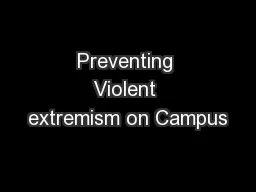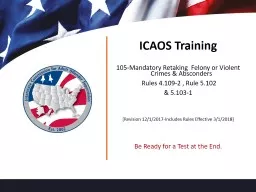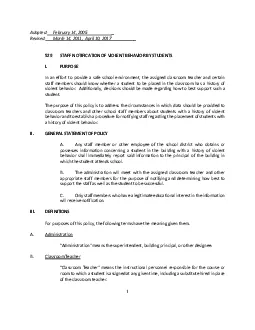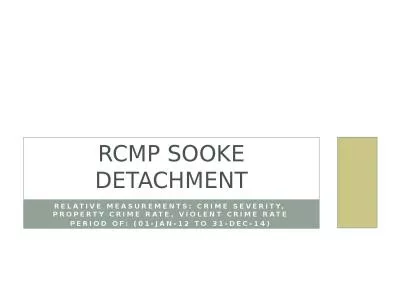PPT-In a Violent Home Everyone is a Victim
Author : tatyana-admore | Published Date : 2019-11-24
In a Violent Home Everyone is a Victim Leanne Sillers BSW RSW Animal Safekeeping Coordinator Saskatchewan SPCA Introduction Established in 1928 the Saskatchewan
Presentation Embed Code
Download Presentation
Download Presentation The PPT/PDF document "In a Violent Home Everyone is a Victim" is the property of its rightful owner. Permission is granted to download and print the materials on this website for personal, non-commercial use only, and to display it on your personal computer provided you do not modify the materials and that you retain all copyright notices contained in the materials. By downloading content from our website, you accept the terms of this agreement.
In a Violent Home Everyone is a Victim: Transcript
In a Violent Home Everyone is a Victim Leanne Sillers BSW RSW Animal Safekeeping Coordinator Saskatchewan SPCA Introduction Established in 1928 the Saskatchewan SPCA is a registered charitable organization working to prevent animal cruelty. Or, How to Recognize . Postmodern Comics. Defining Comics. “Juxtaposed . pictorial and other images in deliberate sequence, intended to convey information and/or to produce an aesthetic response in the viewer” . A guide for teachers and personal tutors . College Tutor guide to Preventing Violent Extremism . The effects of terrorism and violent extremism have an impact on everyone in society, including young . “The great enemy of the truth is very often not the lie-deliberate, contrived and dishonest-but the myth-persistent, persuasive and unrealistic.” . (JFK). The Myths . Most perpetrators are strangers. UN Human Rights Council Session 35. . Lori Ann Post , PhD. Buehler Center for Health Policy & Economics. Department of Emergency Medicine. Feinberg School of Medicine – Northwestern University. By Mary . Knutson RN. Objectives:. To recognize signs of emotional distress in students. To list three or more ways to help students in emotional distress. To recognize high risk factors corresponding to potentially violent students. 10. Whitman Park in Camden, New Jersey . Eighty-five out of every 1,000 residents are . victims of all violent crimes.. 9. . Broadstreet. Ave. and Cortland St. in Detroit, Michigan . Over 45 percent of residencies are vacant leading to houses being used for harboring fugitives, gambling, and drug dealing, victims of all violent crimes.. Rules 4.109-2 , Rule 5.102. & 5.103-1. [Revision 12/1/2017-Includes Rules Effective 3/1/2018]. Be Ready for a Test at the End.. ICAOS Training Series. 101-Transfer & Reporting Instructions Eligibility. ▪ Americans fear violent crime more than any other type of criminal behavior, even though it is uncommon.. 2. NCVS Trends for Violence . Source: Bureau of Justice Statistics: http://bjs.gov . Violent Crime Trends in the U.S.. COUNTERING VIOLENT EXTREMISM THROUGH ANTI-CORRUPTION IN EASTERN AFRICA. Mohamed Jaafar East Africa CSO Roundtable On Fast-tracking UNCAC Implementation Addis Ababa, Ethiopia 12 th April, 2019 Project Objectives and Outcomes COUNTERING VIOLENT EXTREMISM THROUGH ANTI-CORRUPTION IN EASTERN AFRICA. Mohamed Jaafar East Africa CSO Roundtable On Fast-tracking UNCAC Implementation Addis Ababa, Ethiopia 12 th April, 2019 Project Objectives and Outcomes 1AdoptedFebruary 14 2005 RevisedMarch 14 2011 April 10 2017529IPURPOSEIn an effort to provide a safe school environment the assigned classroom teacher and certain staff members D. INVOLVED PARTIES STATE OF CALIFORNIADEPARTMENT OF JUSTICEBCIA 8572 (Rev. 04/2017)Page 1 of 2 SUSPECTED CHILD ABUSE REPORT (Pursuant to Penal Code section 11166)To Be Completed by Mandated Child Abu Period of: (01-JAN-12 to 31-DEC-14). RCMP Sooke Detachment. SOOKE AND COMPARABLE DETACHMENTS. . Sooke. Sidney. Powell River. Ladysmith. Population. 14,000. 29,000. 13,000. 9,000. Members. 15. 32. 25. At Adeetya's Kitchen & Furniture is a Pune manufacturer specializing in producing Modular Home & Kitchen Furniture https://adeetyas.com/home-and-kitchen-furniture-manufacturers-in-pune.php
Download Document
Here is the link to download the presentation.
"In a Violent Home Everyone is a Victim"The content belongs to its owner. You may download and print it for personal use, without modification, and keep all copyright notices. By downloading, you agree to these terms.
Related Documents














